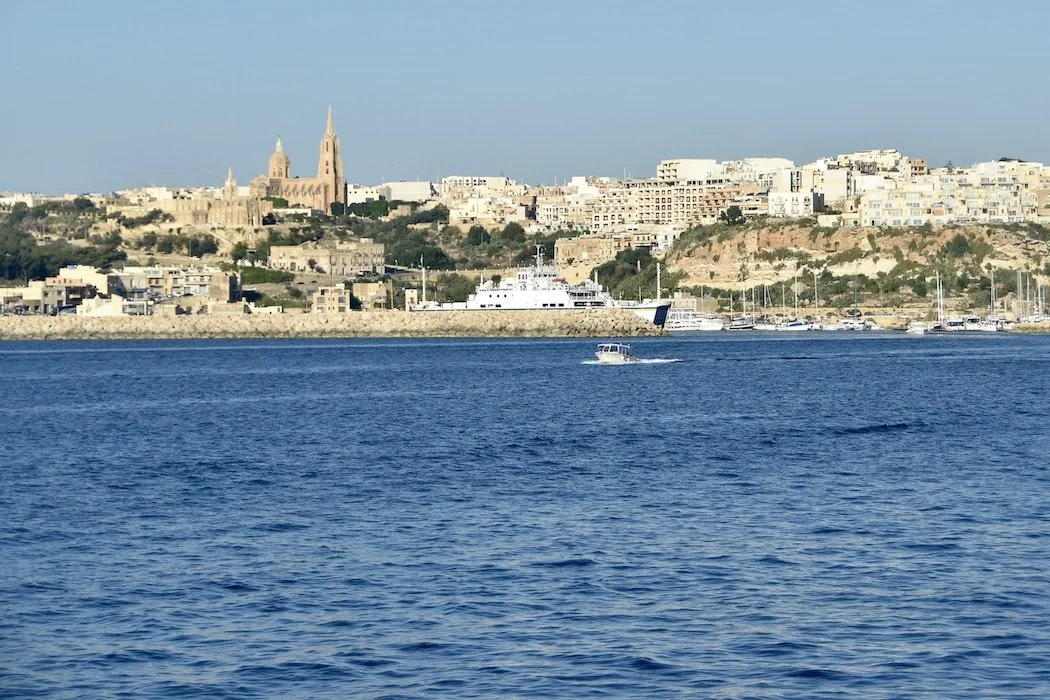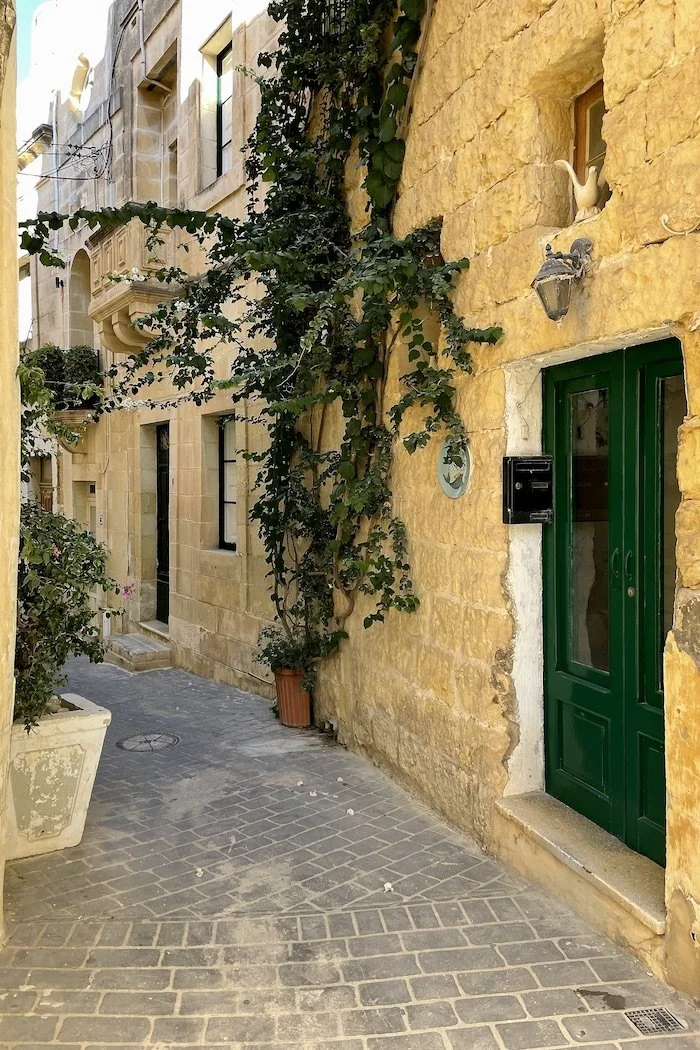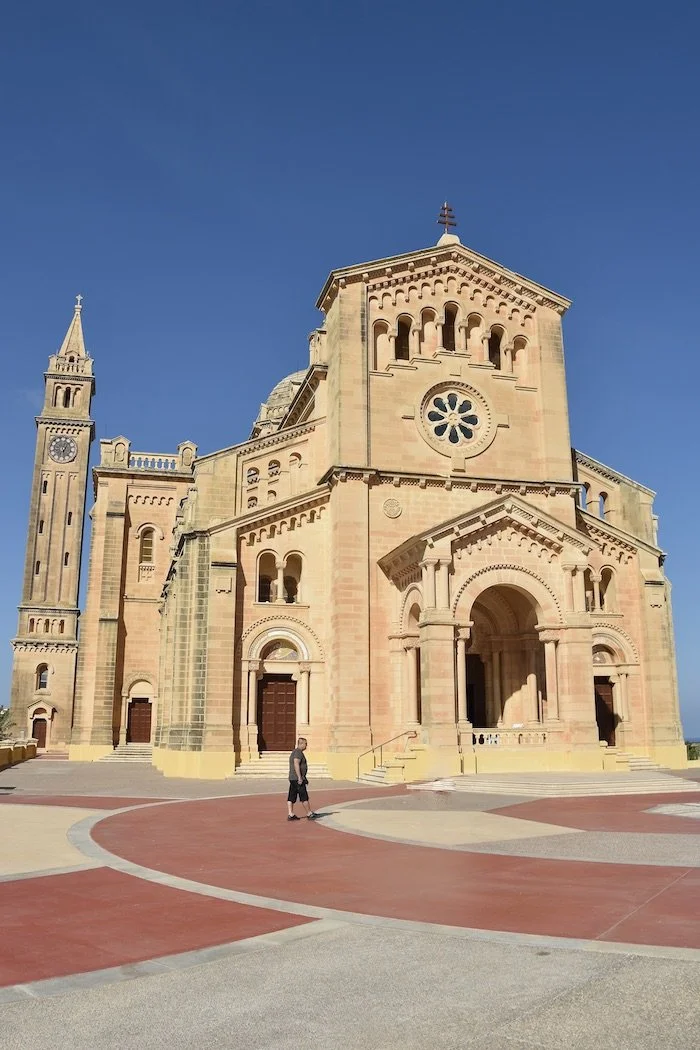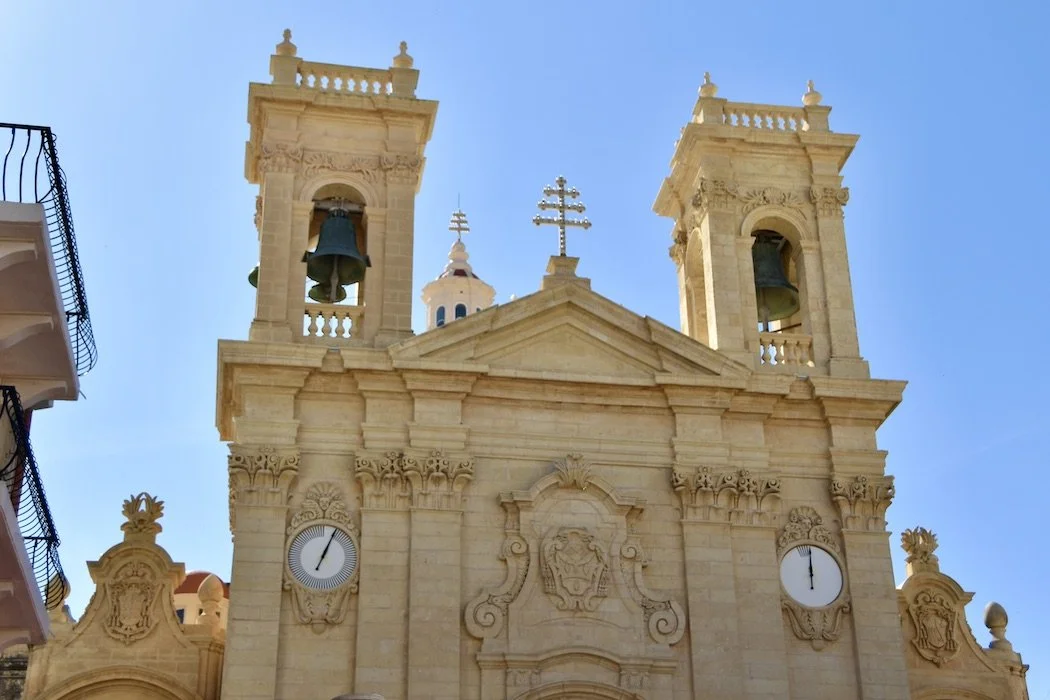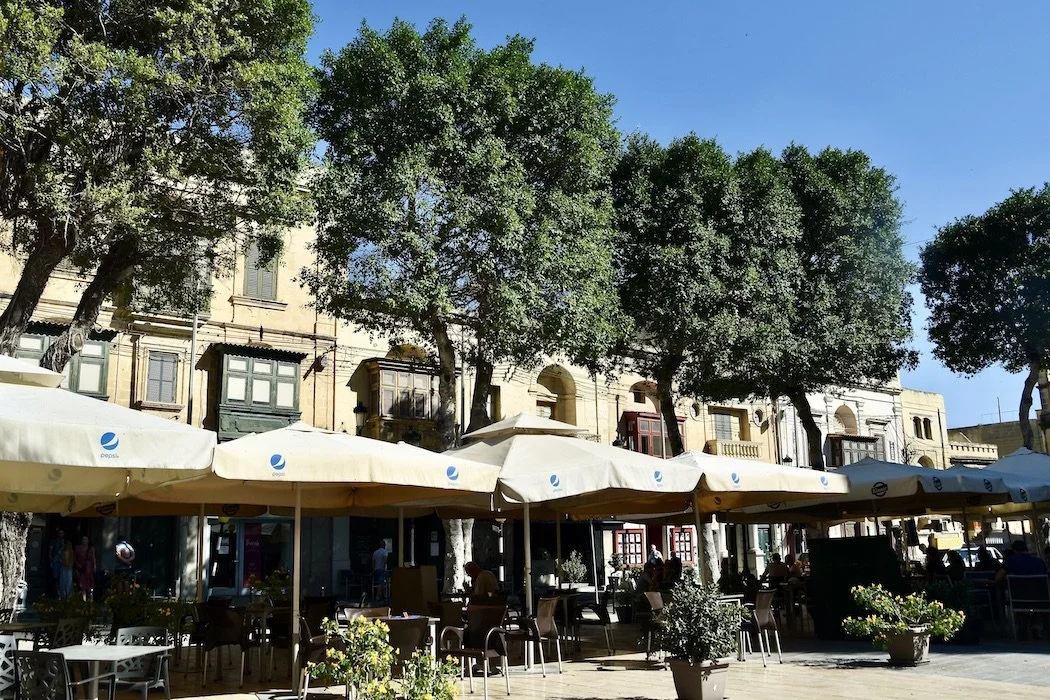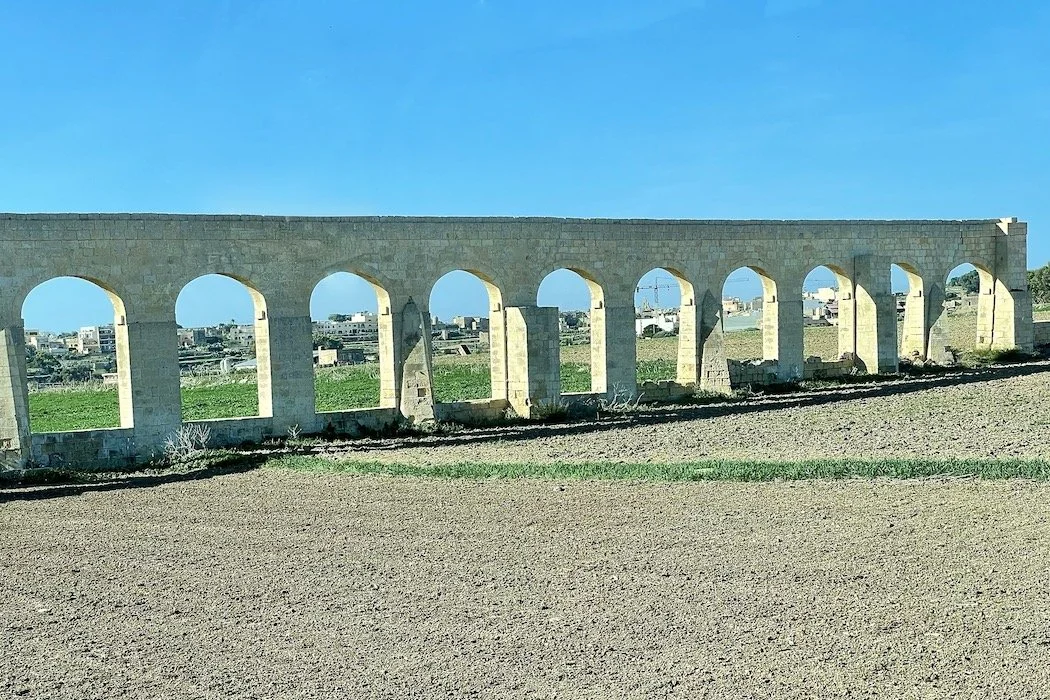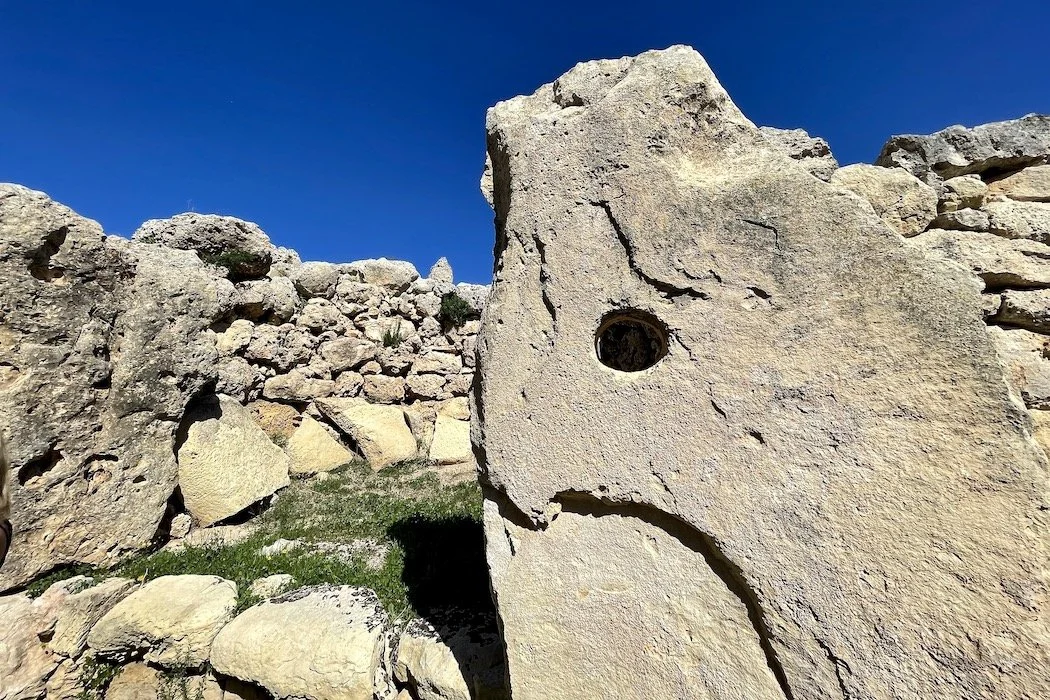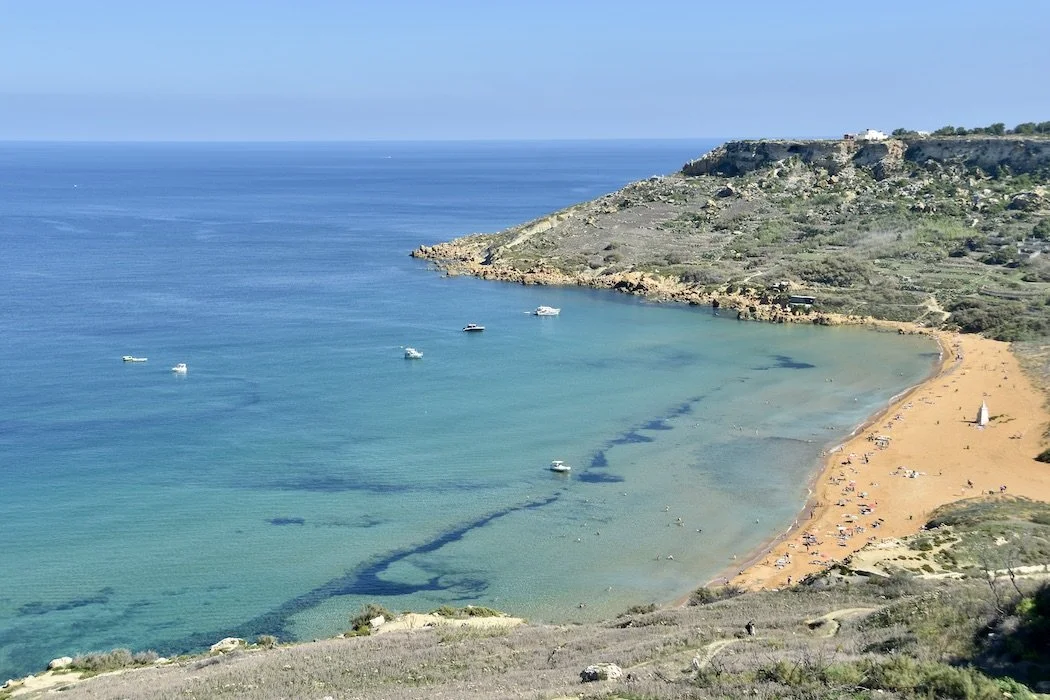Get away to outlying Gozo
Approaching Gozo from the sea
“My escape is to get in a boat and disappear on the water.” – Carl Hiaasen
As an island off the coast of an island in the middle of the Mediterranean Sea, Gozo, a part of Malta, is a laid-back getaway spot. Small, at only 17x13 km (11x8 mi.), it’s a hilly place, and completely devoid of rain from March to September. In the dry season, the rocky landscape is interspersed with thorny bushes; when the rains come, Gozo transforms into a colorful growth of tomatoes, potatoes, olives, grapes, and lemon and carob trees. Besides agriculture and fishing, visitors, who arrive by ferry at the port of Magrr from Valletta to see the temple ruins, hike, or scuba-dive, contribute to the economy. The two most notable things about such a small island are the number of grand churches- every little village has its own- and that the homes have names instead of numbers.
The capital, Victoria, also known as Rabat, sits at the center of the island. On the highest hill, inhabited since the Bronze Age, the Cittadella was a medieval refuge for the island’s population fortified by the Knights of St. John. Recently renovated, it is free of charge and includes the Cathedral of the Assumption, a prison, and museums for folklore and archeology. From the terraces, there’s a panorama view of the countryside and villages. Shady Independence Square with fountains and outdoor cafés, and St. George’s Square with the Basilica provide lovely spots for a rest, while the surrounding maze of old narrow streets makes for fascinating exploring.
Northwest of the city, in the middle of nowhere, the Ta´Pinu Basilica near Dwejra is an impressive construction. Now a pilgrimage site, it started as a chapel built on the spot where a woman heard the voice of the Virgin Mary. On the coast nearby, past San Lawrenz, divers flock to the inland seawater lagoon and Fungus Rock on the coast where a special medicinal fungus grows. At Xwejni Bay, northeast of Victoria, extensive flat stretches of coastal limestone have been cut by hand to form basins and channels: the Marsalforn Salt Pans. White sea salt has been harvested here since Roman times using water fed into the channels, then evaporated by the summer sun and strong winds. For the last 350 years during British rule, rights were passed down through family generations for the traditional harvest. The bay has a slipway for fishermen, and a shallow reef and pebble beach popular with scuba divers and swimmers.
East of Victoria, the Ggantija Megalithic Temples of Malta stand in a heritage park on the Xaghra plateau facing the equinox sunrise. How the clover-shaped megaliths came to be there isn’t known, but the name means giantess in Maltese. At more than 5600 years old, the two contiguous Neolithic sites form a complex older than Stonehenge and the Pyramids. On Gozo’s eastern side, Ramla Bay is the island’s only sandy beach, and it’s red at that. Up a path, near a viewing platform that provides a panoramic view of the coastline, is the entrance to Tal Mixta Cave. Though no longer accessible and known as Calypso’s Cave, it is referred to in Homer’s 9th-century Greek poem “The Odyssey”. Here, the nymph Calypso lived and hosted Ulysses for seven years before he got away.
Don’t Miss:
Marsalforn Salt Pans on Xwejni Bay to see how salt is harvested and to go snorkeling or diving.
Lunch Tip:
Cup Cake at Independence Square in Victoria for lunch and pastries.
Bedtime:
Star Clippers, a tall ship sailing company that includes Gozo in Mediterranean itineraries.
Subscribe for inspiration to have my posts drop directly into your inbox. *If you enjoyed what you read, please share this post with like-minded travelers.*
*All photographs are mine, taken with my Nikon D5600 or iPhone 12 Pro.*

